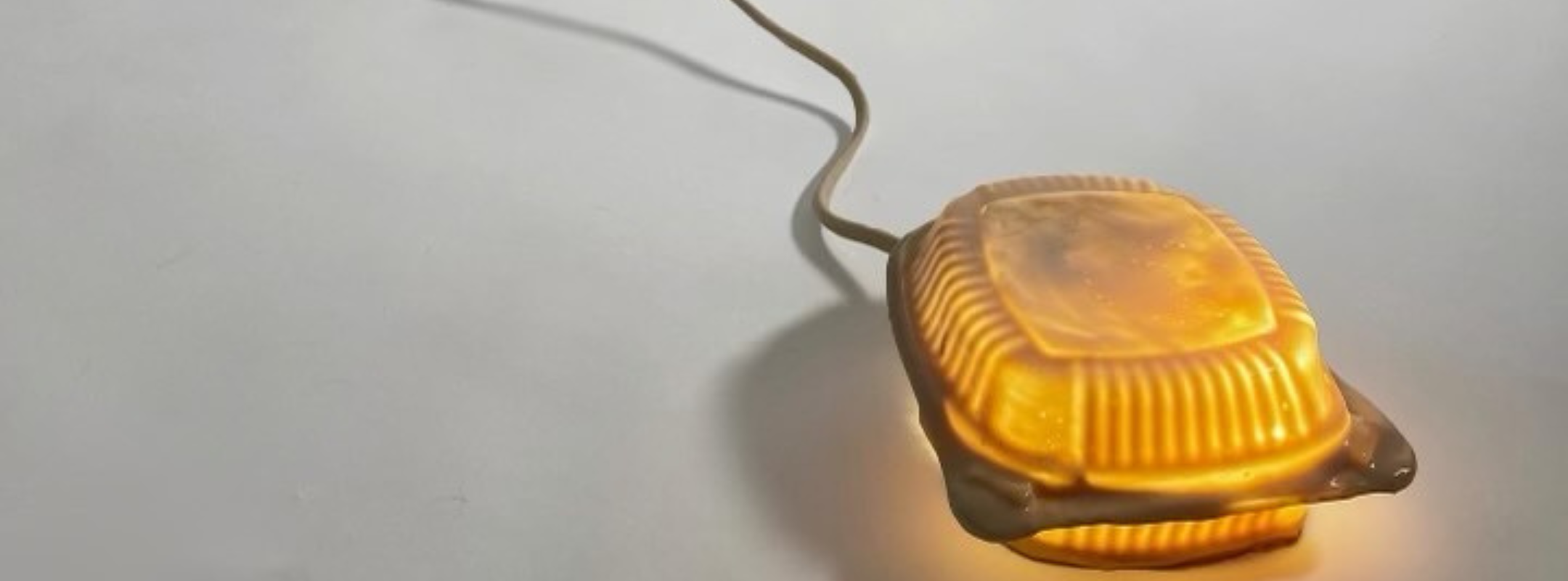
Thank God we don’t know what we look like
We live in an infinitely complicated world and trying to make sense of it all is an impossible task. There is comfort in the objects we interact with every day, and the sacred routines that keep us sane. Inanimate objects don’t think—they just exist. In a divine way, they are above the concerns of us humans. Unlike things, people have souls, and we need to worry about keeping ourselves healthy and happy. We need to believe that the future won’t be so terrible. We create faith, even if it’s a secret. This show focuses on the under-appreciated world directly in front of us. The objects in this show are made by human beings with unique sources of faith. Each piece represents the thoughts and beliefs of the person who made it—perfect objects made by imperfect people.
Curated by George Simonds
Featured artists:
Magnus Gitt – Henderson is a Danish-American artist working in the field of sculpture. He received his BFA in Sculpture from SUNY Purchase and currently lives and works in New York City. Often working with found objects, agricultural materials, and cheap plastics he creates sculptures that question the environmental, social, and historical impact of the material world.
Kati Kirsch is a Brooklyn based artist who calls attention to synchronicities and anomalies in day to day living. Her works strive to push back on existential dread and suggest alternative means to carve out a path with hope. Often, the works turn to absurdity or humor for answers where logic fails.
Ruby Lindsey is a British Brooklyn-based artist who received her BFA from Camberwell College of Arts, London in 2017. A result of foraging and play, her multidisciplinary works seek to combat the creeping dread of everyday mundanity, offering alternative perspectives on everyday objects and places.
Nate Millstein is a sculptor and printmaker from Brooklyn, New York. His body of work focuses on the forgotten inanimate objects which live with us. While his work is closely related to people, his pieces feel abandoned and alone. He draws inspiration from old radiators, used shirts, and the pipes in our walls. These familiar symbols are used as starting points to create abstract compositions, complicating our associations with everyday objects. Nate’s work explores the emotional quality of these discarded inanimates- how they grow, decay, and interact with a space over time. Rather than fabricating standard rubber molds, Nate pours or paints material directly into or onto found objects. This process allows these objects to become molds themselves, capturing their vacancies and sculptural frameworks. His finished sculptures have seams, cracks, and irregularities which stand in contrast to the mass produced counterparts they are made from. Some sculptures look rotten and sag to the floor, while some appear fossilized and preserved on paper. These exaggerated forms personify these everyday, overlooked objects.
Sylvain Munoz is a self taught artist born and raised in New York City. Munoz’s landscapes and portraits on canvas subvert provocative imagery in a playful, cartoon- like aesthetic, drawn from his nostalgic affinity with 20/21st century pop culture references he grew up with.
George Simonds is a multidisciplinary Brooklyn artist who combines and repurposes everyday objects, usually to create machines with abstract functions. With no formal engineering education, these crude handmade machines work to complete an illogical task. His work is about labor, repetition, and the agency of an object independent of its creator.
Bobby Smith is lives and works in Brooklyn, New York. He received a BFA in printmaking from SUNY purchase in 2017. Using printmaking, sculpture and painting his work tells stories that draw on memory and object mythology
James Warren: Responding to both traditions of western landscape painting and recent environmentalist studies, James Warren investigates how our landscape, built and altered by our society, harbors meaning about us, collectively and individually. His work examines ideas of ‘wilderness’ as they exist in our modern understanding of nature. Human interventions within the landscape speak to our aesthetic desire to hide the human and preserve the ‘natural’ in our construction of the landscape. While generally conceived as the last place untouched by human activity, he is instead interested in depicting wilderness for what it is: the creation of particular human cultures at particular moments in human history. James (b.1999) grew up in Toronto, On. Canada and received his BFA from The Rhode Island School of Design. He currently lives and works in Brooklyn, NY.
Main image: “To go” by Nate Millstein
Updated: March 8, 2023
HERE is now a mask-optional space. All patrons attending HERE performances and events will no longer be required to wear masks.
We ask all audience members to please stay home if they have a sore throat, are feeling sick in any other way, or have been recently exposed to COVID-19, and to please contact the box office for refunds or exchanges.
All of our performers, technicians, and staff members are required to be fully vaccinated and masked unless they are onstage performing. Additionally, they are participating in an active testing regimen to keep everyone as safe as possible.
HERE reserves the right to revise protocols as the rate of transmission changes and in light of new scientific data that may present itself.